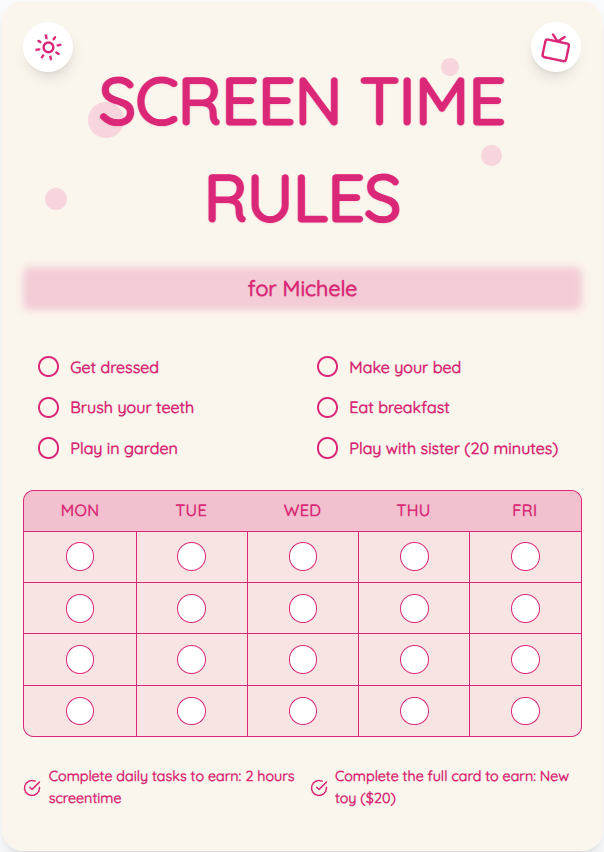Screen Time Management: Setting Limits and Turning Off Screens for Kids
As parents, managing screen time for our kids is crucial for their well-being and development. Finding the right balance between tech use and other activities is key. In this guide, we'll explore practical tips on setting screen time limits and turning off screens for children aged 2-12.
See What Your Screen Time Chart Will Look Like
Here's an example of a beautiful, customizable screen time rules chart you can create for your family

Understanding the Importance of Screen Time Limits
Screen time limits are essential for promoting healthy habits in children. Excessive screen time can impact their social skills, physical health, and cognitive development. By setting limits, parents can ensure a balanced approach to technology use.
Practical Tips for Setting Screen Time Limits
1. Create a screen time schedule and stick to it. 2. Use screen time charts to visually represent limits. 3. Encourage alternative activities like outdoor play and reading. 4. Set a good example by limiting your own screen time.
Put These Tips Into Action
Create a custom chart to implement these strategies with your child
Turning Off Screens: Strategies for a Tech-Free Time
Turning off screens at certain times can help children disconnect and engage in other activities. Consider implementing screen-free zones in your home, such as during meals or before bedtime. Establish clear rules about when screens should be turned off.
Practical Tips for Success
- Use a screen time chart to visually show limits
- Encourage outdoor play and creative activities
- Lead by example by managing your own screen time
- Create screen-free zones in your home
Frequently Asked Questions
How can screen time charts help in managing screen time?
Screen time charts provide a visual representation of allotted screen time, making it easier for kids to understand and adhere to limits. They can also serve as a positive reinforcement tool.
What are the benefits of turning off screens for kids?
Turning off screens allows children to engage in physical activity, social interactions, and creative play. It promotes better sleep quality and reduces the negative effects of excessive screen time.
How can parents effectively enforce screen time limits?
Consistency is key when enforcing screen time limits. Communicate clear rules, involve children in setting boundaries, and provide alternative activities to make the transition easier.
Managing screen time effectively is essential for promoting a healthy balance in your child's life. By setting limits and turning off screens strategically, you can encourage positive habits and foster family harmony. Explore our screen time chart generator for personalized solutions tailored to your family's needs.
Ready to Transform Your Family's Screen Time?
Join thousands of parents who have successfully managed screen time with our customizable charts.
